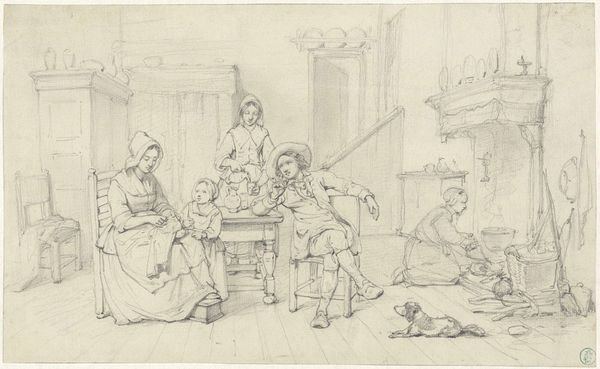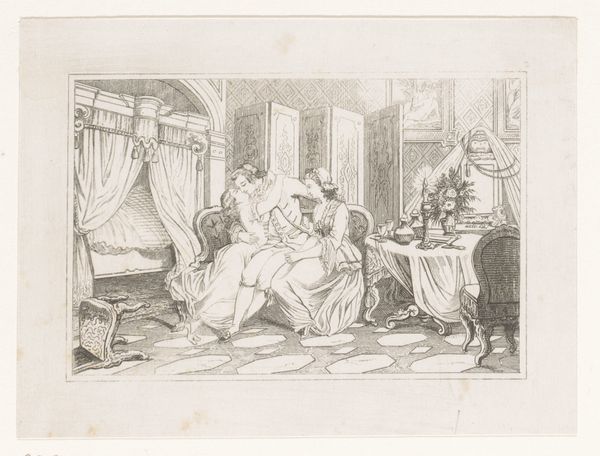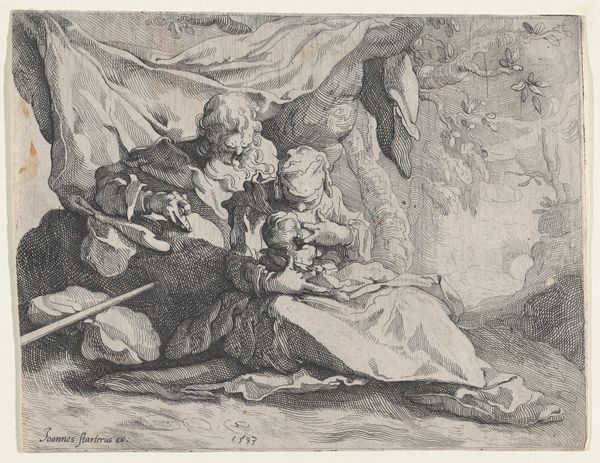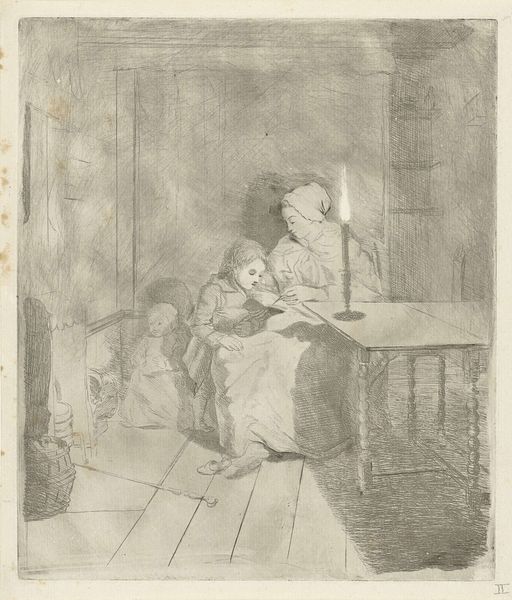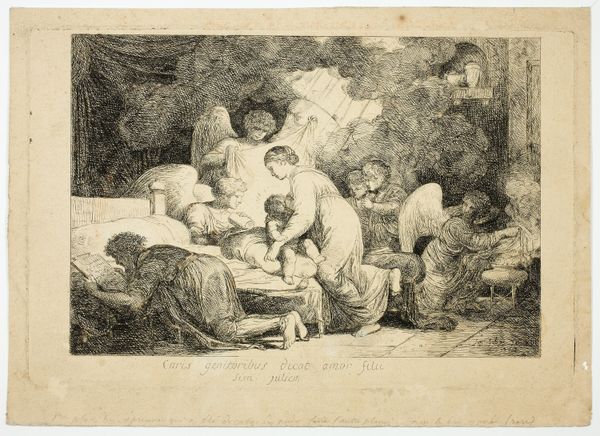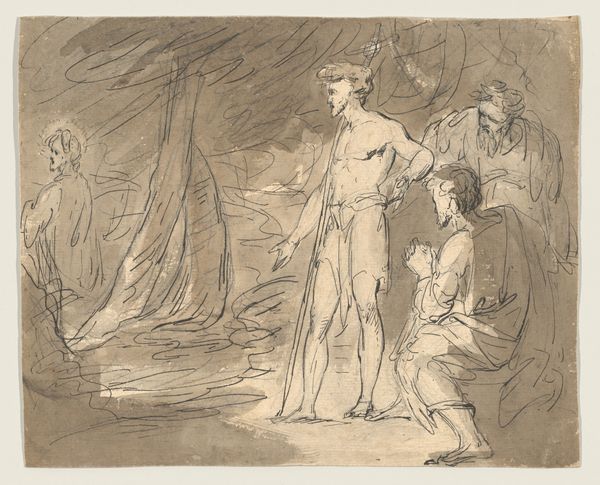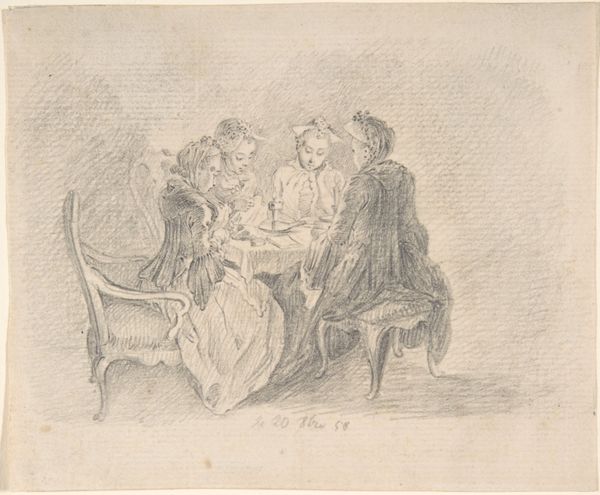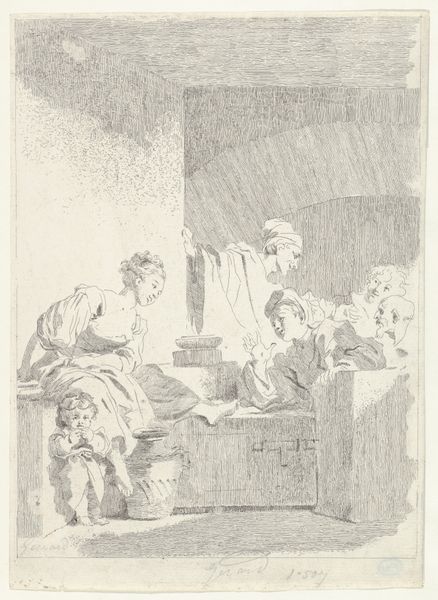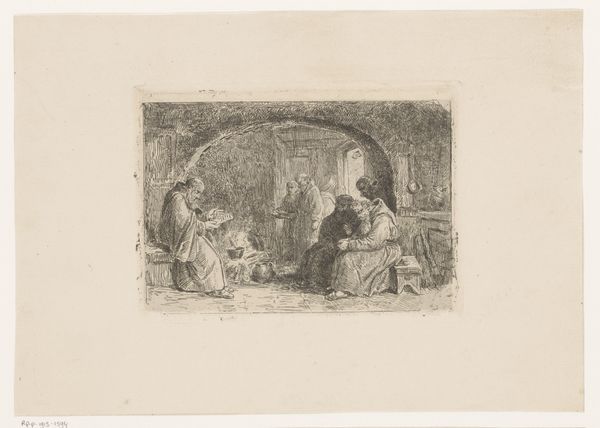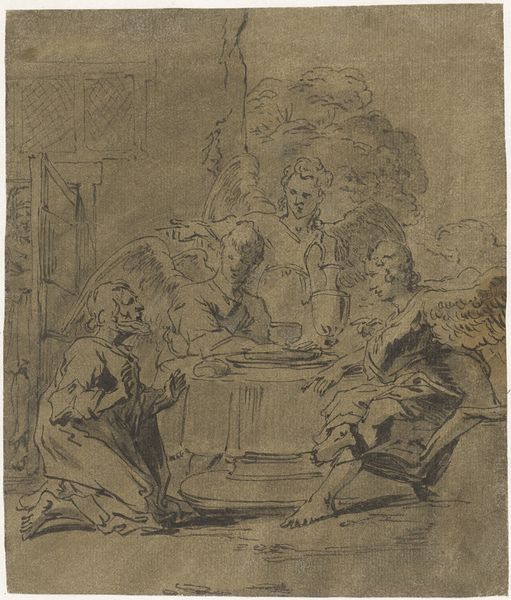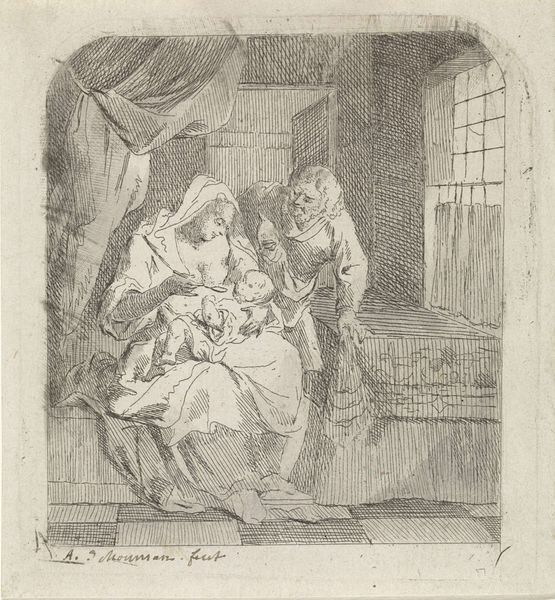
Dimensions: 6 3/8 x 9 3/8 in. (16.2 x 23.8 cm)
Copyright: Public Domain
Curator: I find the subdued palette and ghostly quality of this artwork, "Children Playing Horse and Carriage," quite striking. Constantin Guys created this piece sometime between 1815 and 1892, using watercolor, pen, and ink. It currently resides here at the Metropolitan Museum. Editor: Ghostly is right! There’s a spectral feel, a sense of suspended animation. The near monochrome makes it feel almost like looking at a memory. What does its creation using watercolors, pen, and ink on paper tell us about the materials and process in this portrayal of children? Curator: The process speaks to the nature of observation. This artwork wasn’t conceived as a static depiction, rather as capturing a fleeting moment from daily life. Notice the freedom allowed through the medium. Guys’ use of layered watercolor washes created depth. He employed line and tone to generate forms that emerge from the material ground as though capturing the subject in the present. Editor: And it is the context of nineteenth-century childhood and representation that strikes me. The composition presents social commentary. Observe how these children are occupied within the confines of what appears to be a luxurious room. There is the division by class apparent, and then, the further divisions within class – this scene is one of careful construction. How were children perceived, particularly young girls, during this era? Curator: In Guys’ milieu, leisure became commodified. Such intimate genre paintings served a rising bourgeois class to illustrate narratives. It suggests the means, leisure, and societal expectations shaping middle to upper-class experiences of the era. It mirrors an audience eager to view themselves reflected in art as comfortable, prosperous patrons. Editor: Absolutely, and reflecting that ideal becomes part of the labor, too. In "Children Playing Horse and Carriage," the activity they partake in simulates the class performance they’re enacting: girls playing at riding, overseen by their minder. As spectators, we can become complicit in their display—both in Guys' era, and for us, now. It’s the commodification of both childhood innocence and domestic bliss. Curator: I agree, our discussion today helps shed light on the rich visual and social layering present in this deceivingly simple piece. Editor: It serves to remind us that the material traces within any artwork inevitably lead us back to their place within culture and history.
Comments
No comments
Be the first to comment and join the conversation on the ultimate creative platform.

